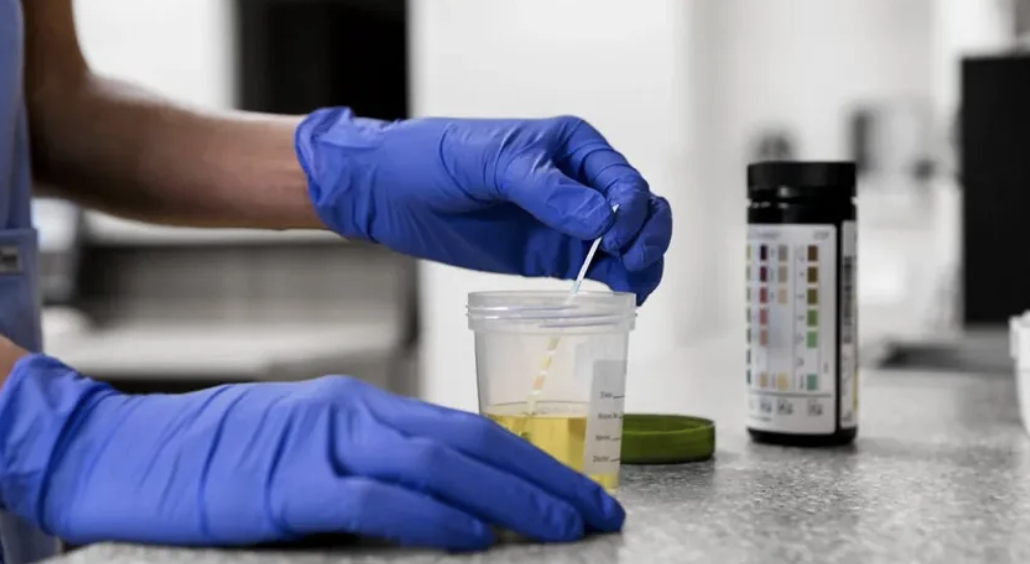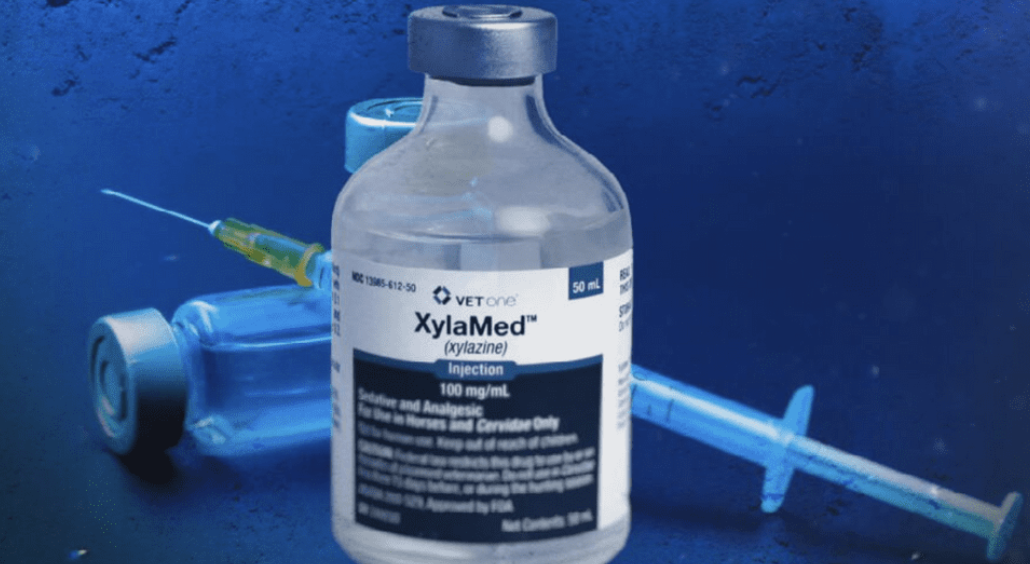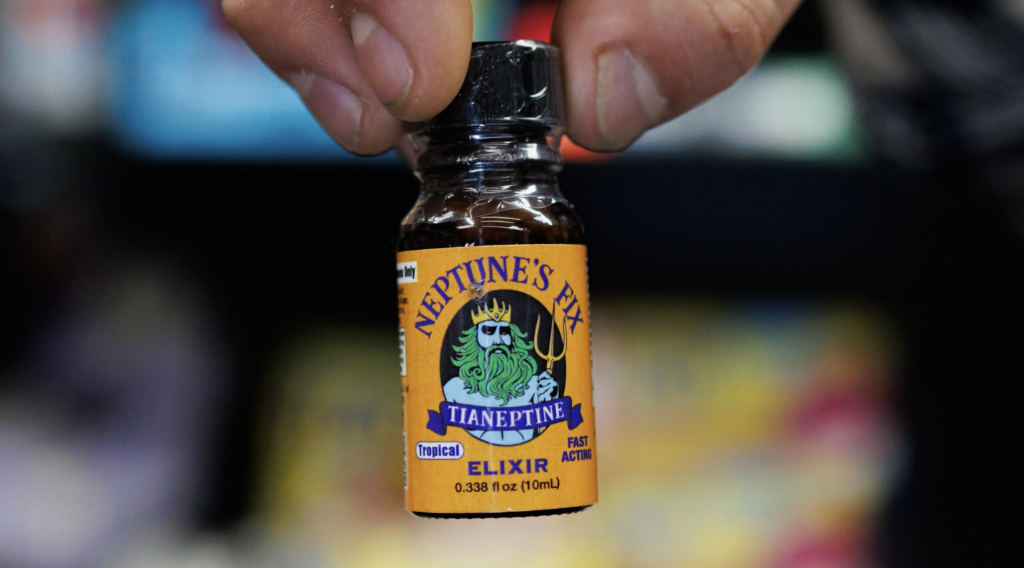Suboxone for Alcohol: Can It Help Treat Alcohol Use Disorder (AUD)?
Is Suboxone an effective treatment for alcohol use disorder (AUD)? Although Suboxone is primarily used for opioid addiction, some clinicians are investigating its potential in treating alcohol dependence, particularly suboxone for alcohol cravings and withdrawal. This article dives into how Suboxone might help with alcohol cravings and withdrawal, and compares it with other FDA-approved medications for AUD.
Key Takeaways
- Suboxone, while FDA-approved for opioid addiction, is not approved for alcohol use disorder, and its effectiveness for treating alcohol cravings remains unestablished.
- Clinical observations suggest that Suboxone may lead to reduced alcohol consumption in individuals with co-occurring alcohol and opioid use disorders, but it should not be used as a standalone treatment.
- Comparing Suboxone with FDA-approved medications for alcohol addiction, such as Naltrexone, Acamprosate, and Disulfiram, highlights the distinct mechanisms and established effectiveness of these alternatives.
What is Suboxone and how does it work?
Suboxone is a medication that combines buprenorphine and naloxone. It is FDA-approved for treating opioid addiction and works by reducing cravings and withdrawal symptoms associated with opioid dependence. Buprenorphine, a partial opioid agonist, activates opioid receptors in the brain but to a lesser degree than full agonists like heroin or methadone. This activation helps in reducing cravings and withdrawal symptoms without producing the intense high associated with opioid abuse. Naloxone, an opioid antagonist, is included to deter misuse of the medication. Suboxone works effectively in managing these challenges with opioid drugs.
When taken as prescribed, Suboxone acts as a dual-action mechanism that significantly aids individuals in recovering from opioid dependence. Buprenorphine’s partial activation of opioid receptors eases withdrawal symptoms and cravings, while naloxone prevents the high that can lead to Suboxone abuse. This combination makes Suboxone a powerful tool in the arsenal against opioid addiction.
Although primarily used to treat opioid dependence, there is emerging interest in whether Suboxone can be used off-label to help with alcohol addiction. The experimental use of Suboxone in alcohol addiction treatment is not well-established, but some clinicians explore its potential benefits in specific contexts.
Can Suboxone be used for alcohol use disorder (AUD)?
Suboxone is primarily prescribed for opioid use disorder and is not FDA-approved for treating alcohol use disorder. Despite this, some clinicians consider its off-label use for individuals struggling with both alcohol and opioid addictions. However, it is crucial to understand that Suboxone does not effectively reduce alcohol cravings or treat alcohol dependence on its own.
There are anecdotal reports and early studies suggesting that individuals with both alcohol and opioid use disorders may consume less alcohol while on Suboxone. This reduction is not due to a direct effect on alcohol use but rather the overall stabilization provided by the medication. Preliminary studies in rats have shown that buprenorphine might reduce alcohol consumption, but more research is needed to determine its applicability to humans.
Medical professionals typically do not recommend Suboxone as a standalone treatment for alcohol addiction. While it might play a role in certain complex cases involving dual diagnoses, its primary use remains in treating opioid addiction. Always consult a healthcare provider before considering Suboxone for alcohol dependence.
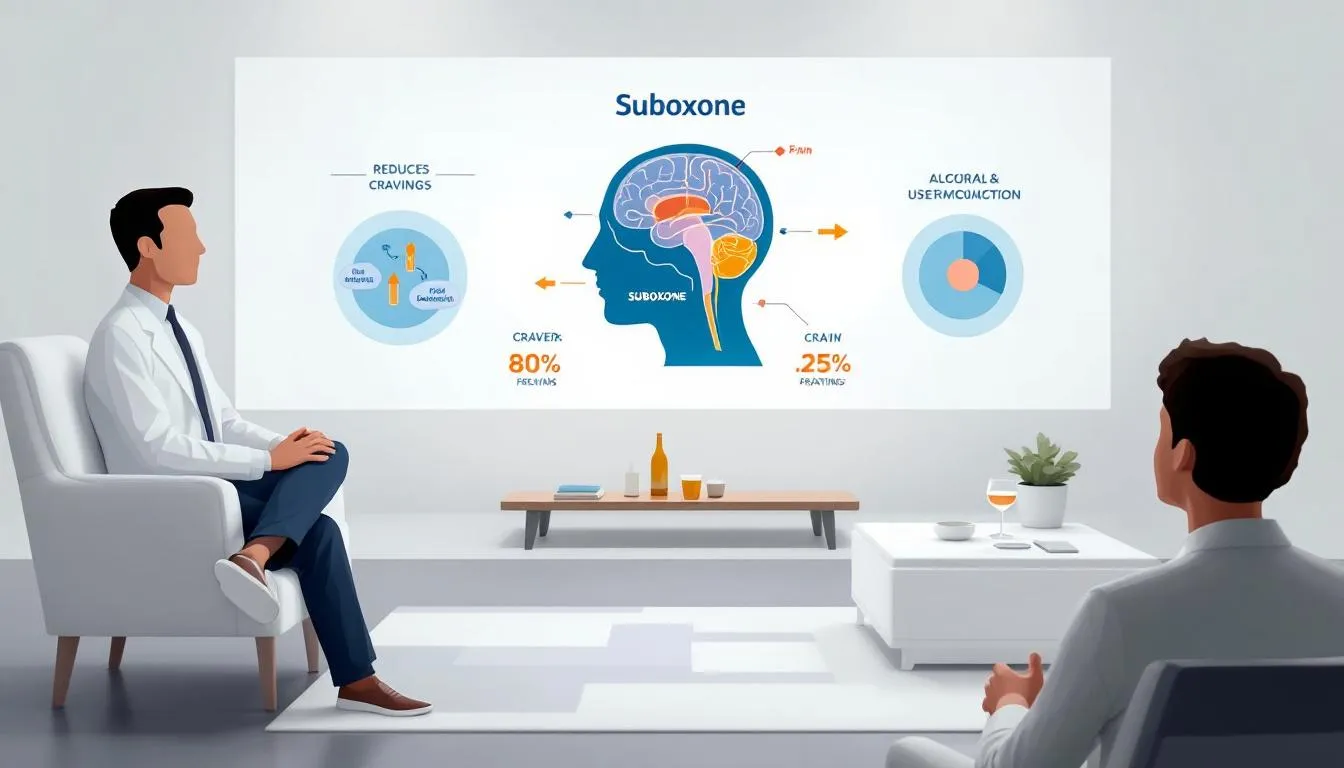
How might Suboxone help with alcohol cravings and withdrawal?
Buprenorphine, a key component of Suboxone, influences brain pathways related to addiction and cravings. It interacts with opioid receptors in the central nervous system, which are also involved in the reward pathways associated with alcohol consumption. This interaction may theoretically help in reducing alcohol cravings and withdrawal symptoms by modulating these pathways.
Additionally, buprenorphine’s partial activation of opioid receptors and opiate receptors can impact dopamine levels, a neurotransmitter involved in the pleasure and reward system of the brain. Stabilizing dopamine levels with buprenorphine might indirectly lessen alcohol cravings. However, it’s important to note that this is a theoretical benefit and not a confirmed clinical outcome.
Naloxone, the naloxone component of Suboxone, is an opioid antagonist that blocks the effects of opioids on the brain. While naloxone’s role in reducing alcohol intake is less clear, it helps deter the misuse of Suboxone. The clinical evidence supporting Suboxone’s effectiveness in treating alcohol cravings and withdrawal is limited and exploratory, requiring further research to establish its potential benefits in this area. If a patient is transitioning off treatment, a medically supervised Suboxone detox may be required to safely manage withdrawal and support long-term recovery.
Suboxone vs. FDA-approved medications for alcohol addiction
Suboxone is not FDA-approved for treating alcohol use disorder (AUD). Comparing it with FDA-approved medications clarifies its effectiveness. Understanding the differences between Suboxone and these approved medications can help in determining the most effective treatment for alcohol addiction.
The following subsections will compare Suboxone with three FDA-approved medications for alcohol addiction, starting with a comparison of naltrexone vs Suboxone. Each of these medications has distinct mechanisms and clinical uses, providing a comprehensive view of the treatment landscape for AUD.
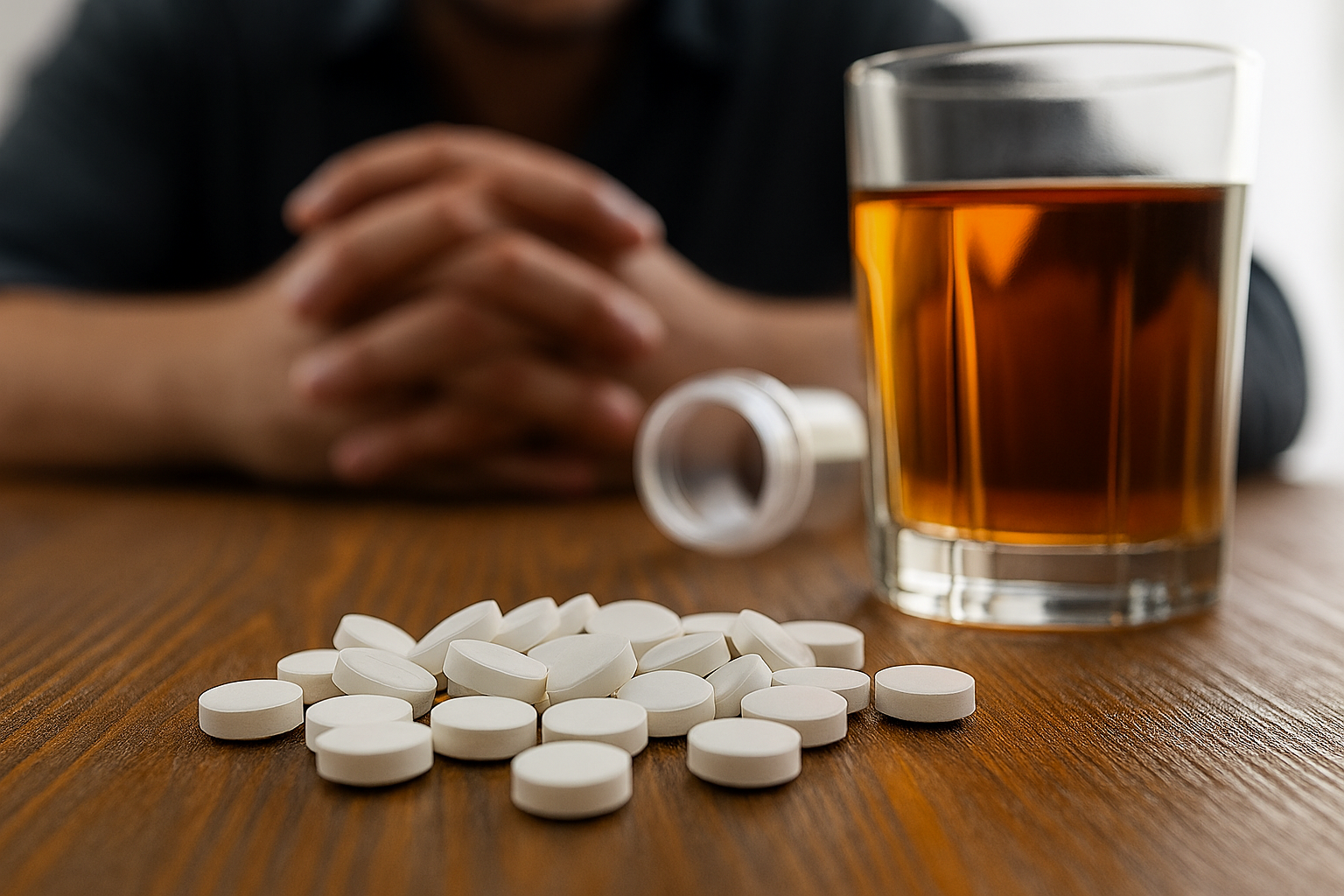
Naltrexone vs. Suboxone
Naltrexone is an opioid antagonist designed to block the pleasurable effects of alcohol and opioids, making it effective in reducing cravings for both substances. Unlike Suboxone, which is primarily prescribed for opioid addiction, Naltrexone is approved for treating both opioid and alcohol use disorders. Naltrexone’s complete blockade of opioid receptors helps reduce cravings and the pleasure derived from alcohol and opioid use.
Suboxone, on the other hand, combines buprenorphine, a partial opioid agonist, and naloxone, an opioid antagonist. While Naltrexone requires complete detoxification from opioids before use to avoid precipitating withdrawal symptoms, Suboxone can be administered during the early stages of opioid withdrawal, making it beneficial for immediate stabilization.
Naltrexone’s non-addictive nature and monthly injection option may offer advantages over Suboxone’s daily administration and potential for misuse. However, the choice between Naltrexone and Suboxone should be guided by individual health factors, treatment goals, and potential medication interactions.
Acamprosate vs. Suboxone
Acamprosate helps restore the balance of neurotransmitters disrupted by alcohol misuse, making drinking less rewarding. It is primarily used to maintain abstinence from alcohol by modulating glutamate neurotransmission, addressing the neurochemical imbalances caused by long-term alcohol abuse. Unlike Suboxone, Acamprosate does not have the potential for abuse, making it a safer option for individuals with a history of substance misuse.
Clinical studies have shown the following about Acamprosate and Suboxone:
- Acamprosate is effective in reducing relapse rates among patients recovering from alcohol dependence.
- Suboxone, while beneficial in treating opioid addiction, does not have the same established effectiveness for reducing alcohol cravings.
- Acamprosate requires consistent dosing, typically three times daily.
- Suboxone is usually administered once daily, which may enhance adherence in some patients.
For patients with alcohol use disorder who do not have co-occurring opioid addiction, Acamprosate may be preferred as it specifically targets alcohol cravings, opioid cravings, and withdrawal symptoms. The choice between these medications should be based on individual patient needs and circumstances.
Disulfiram vs. Suboxone
Disulfiram takes an aversive approach to treating alcohol dependence by causing unpleasant symptoms when alcohol is consumed. This includes symptoms like nausea, vomiting, and headaches, which act as a strong deterrent against drinking alcohol. Suboxone, in contrast, works through indirect modulation of brain pathways involved in addiction but does not create an aversive reaction to alcohol.
Patient adherence can be a significant challenge with Disulfiram, as it requires a high level of commitment to avoid alcohol entirely. The effectiveness of Disulfiram relies heavily on the patient’s willingness to comply with the treatment regimen, which can be difficult for some individuals. Suboxone’s approach, focusing on reducing cravings and withdrawal symptoms, may be more manageable for patients with dual diagnoses of opioid and alcohol dependence.
The risks associated with Disulfiram include severe reactions if alcohol is consumed, making it less safe for individuals who may struggle with complete abstinence and face an increased risk. Suboxone, while not risk-free, offers a different safety profile and may be more suitable for individuals needing support for both opioid and alcohol use disorders.
What does the research say about Suboxone for alcohol addiction?
Research on Suboxone’s effectiveness for alcohol addiction is still in its early stages. Some studies indicate that buprenorphine, a component of Suboxone, can decrease alcohol consumption at higher doses, although it may increase intake at lower doses due to its interaction with opioid receptors. Clinical observations have shown that treatment with buprenorphine may reduce the frequency and quantity of alcohol consumption among individuals dependent on alcohol.
The dual action of buprenorphine—enhancing alcohol consumption at low doses while suppressing it at high doses—highlights its complex pharmacological profile. Studies also suggest that buprenorphine’s effects on alcohol intake may involve its action on nociceptin/orphanin FQ receptors, which could counteract the opioid effects that typically promote alcohol consumption.
Further research is needed to fully understand how Suboxone can be effectively used for alcohol addiction. The administration of naltrexone prior to buprenorphine can block the increase in alcohol consumption induced by low doses of buprenorphine, but does not affect the reduction seen at higher doses. This highlights the need for more comprehensive studies and clinical trials to establish clear guidelines.
Is Suboxone safe for people with alcohol use disorder?
Using Suboxone off-label for alcohol use disorder comes with safety considerations. For non-opioid users, Suboxone’s safety profile is less understood, and potential interactions with alcohol must be managed carefully. Mixing Suboxone with alcohol can amplify side effects like dizziness and impaired judgment, as described in known Suboxone interactions, posing serious health risks.
Common side effects of Suboxone include nausea, headache, sweating, and constipation. More serious risks involve respiratory depression, especially when combined with other depressants like alcohol. This combination can lead to severe health complications, including respiratory failure and unconsciousness.
Alcohol users considering Suboxone must also be aware of liver health concerns and the potential health consequences. Both alcohol and Suboxone can stress the liver, potentially leading to liver damage over time. Therefore, it is crucial for individuals to consult healthcare providers to evaluate the risks and benefits thoroughly.
Who might be considered for Suboxone off-label use in alcohol recovery?
Suboxone might be considered for off-label use in alcohol recovery in specific clinical scenarios, particularly when there is a dual diagnosis of opioid and alcohol dependence. These complex cases require careful evaluation and individualized treatment planning, considering the unique needs of each patient.
Medical supervision and monitoring are essential when using Suboxone off-label for alcohol recovery. Healthcare providers can help manage potential risks, adjust dosages, and monitor for adverse effects. Individualized treatment plans that incorporate Suboxone should always be developed and overseen by qualified medical professionals.
Alternatives to Suboxone for treating alcohol use disorder
There are several FDA-approved medications specifically designed for treating alcohol use disorder, including:
- Naltrexone: Works by blocking the pleasurable effects of alcohol, helping to reduce cravings and prevent relapse.
- Acamprosate: Helps restore the balance of neurotransmitters disrupted by chronic alcohol use, making it easier to maintain abstinence.
- Disulfiram: Acts as a deterrent by causing unpleasant reactions when alcohol is consumed, helping individuals avoid drinking.
Behavioral therapies are also crucial in treating alcohol addiction. These include:
- Cognitive Behavioral Therapy (CBT), which helps individuals recognize and change harmful drinking patterns
- Motivational Interviewing (MI), which encourages a commitment to change
- Group counseling and support groups, such as Alcoholics Anonymous (AA), which provide community support and shared experiences, valuable during the recovery process. Additionally, these therapies can help to treat alcoholism effectively.
Holistic and supportive care approaches can complement traditional treatments and aim to improve overall well-being and support long-term recovery by addressing the physical health, mental health, and psychological aspects of addiction. These approaches include:
- Nutritional therapy
- Exercise
- Mindfulness
- Stress management techniques
Bottom Line: Should Suboxone be used to treat alcohol addiction?
Suboxone is primarily intended for treating opioid addiction and has not proven effective for alcohol dependence or withdrawal. Combining suboxone and alcohol can lead to serious side effects, including respiratory issues and impaired judgment, and current medical guidelines do not endorse its use for treating alcohol addiction, especially when taking suboxone.
However, in specific cases involving dual diagnoses of opioid and alcohol dependence, suboxone treatment may be considered under strict medical supervision to treat opioid addiction. Always consult healthcare professionals to explore appropriate treatment options for alcohol addiction, as there are alternative medications specifically approved to prescribe suboxone for managing alcohol cravings and withdrawal symptoms.
FAQs About Suboxone for Alcohol
The frequently asked questions section addresses common concerns and provides clear, concise answers. This helps readers quickly find important information and clarifies common misconceptions about Suboxone and its potential use in treating alcohol use disorder.
Is Suboxone approved by the FDA for alcohol addiction?
No, Suboxone is not approved by the FDA for alcohol addiction; it is approved only for opioid use disorder. When a medication is used for conditions other than those approved by the FDA, it is referred to as “off-label” use.
Can Suboxone stop alcohol cravings?
Research suggests Suboxone may help reduce alcohol cravings, aligning with its role in managing opioid dependence. However, results can vary widely, and it is not considered a primary treatment option for alcohol addiction.
What happens if you drink alcohol while on Suboxone?
Combining alcohol with Suboxone can amplify side effects like dizziness and impaired judgment, posing serious health risks. Long-term use of both substances can lead to respiratory suppression and severe complications, including brain damage. It is important to avoid situations where you might mix alcohol with these medications.
What’s the best medication for alcohol addiction?
The best medication for alcohol addiction is one that is FDA-approved and guided by a healthcare professional. Prescription medications like Naltrexone, Acamprosate, and Disulfiram are effective options, and personalized care is essential for successful treatment.




